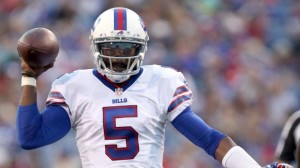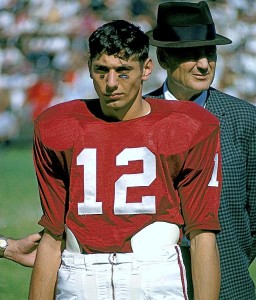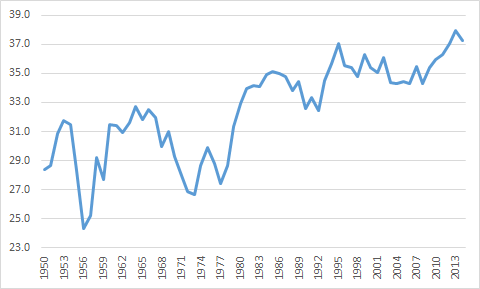Yesterday, we looked at which teams had the most pass attempts (including sacks) in individual games relative to league average. Today, we will analyze things on the season level.
Let’s use Tobin Rote as an example. As Brad Oremland noted, Rote was stuck playing for terrible Packers teams in the ’50s that were weak on defense and light at running back. In 1951, Green Bay ranked 12th in the 12-team NFL in rushing attempts, rushing yards, and rushing touchdowns, and 11th in points allowed and yards allowed. The Packers often went with just one running back in the backfield — a rarity in those days — which is a sign that the emphasis on the passing game wasn’t just a result of the team’s losing record. Green Bay also went with a quarterback-by-committee approach: Rote started 11 of 12 games, but he finished the year with 256 pass attempts, while backup Bobby Thomason had 221. Individually, neither had great numbers, but together, they helped Green Bay finish with 50 more pass attempts than any other team in football.
The method I used yesterday, and will be using throughout this series, is to give the starting quarterback credit for all team pass attempts in that game. The reason? If a quarterback gets injured and finishes a game with just 5 attempts, that will kill his average in a misleading way. That would do more harm, I think, than giving him credit for all attempts in the game. But that decision has its drawbacks, and in particular, it seems ill-suited for teams in the early ’50s that employed a QBBC approach. This is particularly relevant here, because “Rote’s” 1951 season checks in as the most pass-happy on our list.
So the Rote line for ’51 should really be thought of as Rote and Thomason. Rote’s 1956 season also makes the top ten, and there’s no fine print necessary there. Rote started 11 of 12 games and threw 308 passes, while Bart Starr started the remaining game and had just 44 attempts that season. The ’56 Packers were not very good, ranking last in both points and yards allowed, and last in rushing attempts, too.
The table below shows the top 300 seasons (minimum 7 games started) in terms of pass attempts relative to league average. You can use the search function to see that Rote’s season in 1954 with Green Bay also makes the cut. To explain what’s in the table below, let’s use season #15 on the list, Shane Matthews in 1999, as an example. That year, Matthews started 7 games, but in those games, the Bears averaged an incredible 47.1 dropbacks per game, the second highest rate ever. Matthews shared some snaps with rookie Cade McNown that year, so you wouldn’t know it just by looking at Matthews’ raw numbers, but the ’99 Bears were insanely pass-happy under Gary Crowton. The league average was 36.3 dropbacks per game, so the Bears in “Matthews games” were 10.8 attempts above average, and 129.8% above league average. [continue reading…]




